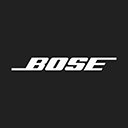Back to article
3348
Mounting the speaker on the wall bracket
Get help mounting your speaker to a wall with the Bose Soundbar Wall Bracket accessory.
The Soundbar Wall Bracket accessory comes with a quick-start guide and a mounting template.
If you do not have the template or do not see your soundbar on the template, click here to print the template.
IMPORTANT PRINTING INFO
- Before printing, go to the printer options and turn off any scaling options (e.g. "Fit to page" or "Scale"). This tells your printer not to make the template larger or smaller.
- Before marking your wall, line up a ruler to the printed ruler on the first page of the template. If your ruler and the printed ruler do not match exactly, do not continue. Check the printer settings and try again.
- Get the template ready:
- If using the included template, unfold it.
- If you printed the templated using the link above, cut and tape together the sheets of paper where indicated.
- Identify the template for your soundbar:
- Align the rubber pads on the bottom of your soundbar with the brackets depicted on the template.
- Use the template where the depicted bracket spacing matches the spacing between the rubber pads on the soundbar.
- Place the template on your wall, centered below the TV
- Slide the template up behind the TV so the long line labeled TV is in line with the bottom edge of your TV.
TIP: This placement is important to ensure the wire channel cover hides the cables going behind your TV. - Use a level to ensure the template is straight, then tape the template to the wall.
- Mark the appropriate holes you need to drill.
NOTE: The wire channel can be attached with screws or with the included double-sided tape. If using the tape, you do not need to drill the 2 holes for the wire channel. - Drill the holes you marked:
- For the wall bracket, start with the smaller 1/8” drill bit. If any hole is on a stud, you can use the 1/8” hole you made. For any holes where you do not hit a stud, widen the holes with a 11/32” drill bit.
- For the wire channel, start with the smaller 3/32” drill bit. If you hit a stud, you can use the 3/32” hole you made. If you do not hit a stud, widen the hole with a 3/16” drill bit.
- Insert wall anchors for any holes that are not on a stud:
- Use the smaller plastic anchors for the wire channel.
- Use the larger t-shaped metal anchors for the wall bracket. To insert the anchor, fold the two legs together, then push it into the wall. Next, insert the red push pin into the anchor to open it behind the wall. Then remove the push pin.
- Attach the brackets to the wall:
- Use the larger pointed screws to attach the wall brackets the wall.
- Use the smaller pointed screws for the wire channel.
- Connect the cables to your soundbar:
- Connect the power cord to your soundbar.
- Connect the TV audio cable (optical or HDMI) to your soundbar.
- If your soundbar has a connection labelled ADAPTiQ, connect the included right angle adapter to it.
- Attach your soundbar to the brackets:
- Peel off the rubber pads from the bottom of the soundbar to expose the mounting points.
- Align the mounting points on the soundbar to the brackets.
- Hold the soundbar secure with one hand and use your other hand to attach the soundbar to the brackets with the small flat screws.
- Use a screwdriver to securely tighten the soundbar to the brackets.
- Run the power and TV connection cables over the wire channel, then press the decorative cover on top of the channel.
Was this article helpful?
Thank you for your feedback!

